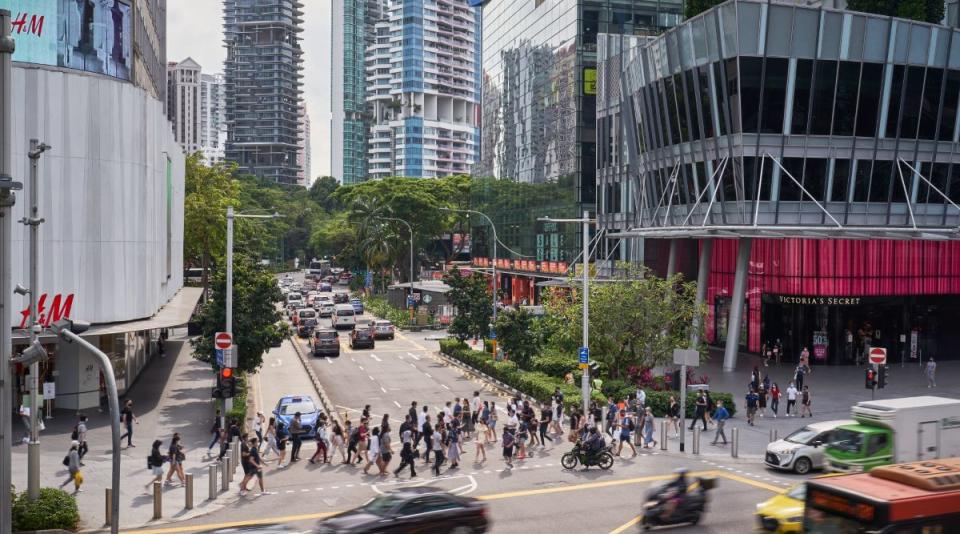Singapore's Budget 2021 to support a smooth economic recovery; fiscal deficit likely to be smaller: Maybank Kim Eng

What is to come in Budget 2021?
Singapore is just two weeks away from announcing its Budget 2021 and market watchers are already putting forth their “wish lists” on what may come.
This Budget is the first for the year and follows the close to $100 billion in support measures doled out across five packages in 2020.
Maybank Kim Eng economists Chua Hak Bin and Lee Ju Ye expect some of the support given out in 2020, to continue this year.
For instance, they foresee that the percentage paid by the government on employees’ wage bills under the Jobs Support Scheme (JSS) may be amended based on the sector’s performance in the past few months.
In line with this, they expect the co-payment to be maintained at 50% for the harder hit Tier 1 sectors of aviation and tourism, while being cut back from 30% to 20% for Tier 2 sectors such as food services, retail, marine & offshore and arts & entertainment, which have been showing signs of a recovery.
They add that the support for Tier 3 sectors, is likely to cease.
SEE:MAS to continue accommodative monetary policy in 2021: Fitch Solutions
Such a targeted scheme will cover the wage bills of some 22% of Singapore’s workforce, estimate Chua and Lee. They predict that the scheme, if extended for nine months, could cost around $2 billion.
For comparison, the duo estimate that the JSS – which is slated to run between April 2020 till March, has cost some $30 billion. As part of this, the government has been co-paying the wage bills of 1.9 million Singaporeans working across 140,000 companies.
Meanwhile, Chua and Lee expect the upcoming Budget to support a “smooth recovery” while preparing for a “post-pandemic normal”. The way they see it, the focus will be on: creating jobs, reskilling the workforce, supporting digital transformation and home-based education, developing agri-tech and enhancing food security.
Chua and Lee also expect public construction to pick up with infrastructure projects such as the Cross Island MRT Line, Downtown Line extension to Sungei Kadut and the recently-announced JB-Singapore Rapid Transit System line.
Collectively, these measures are slated to help Singapore come out of its worst recession in history.
Chua and Lee have penciled a GDP growth of 4.5% for the republic this year, in line with the 4% to 6% growth range forecast by the government.
“The recovery will be sluggish and more U-shaped than V, as the vaccine rollout will be slow and border controls will remain tight,” they say.
However, the economists caution that Singapore’s economy is likely to feel a drag in 1Q2021 from a more infectious wave which has prompted the reinstating of lockdowns in some of its key trading partners.
For instance, Malaysia’s second lockdown, or MCO 2.0, is likely to disrupt manufacturing and food supply chains, say Chua and Lee. They add that this will also aggravate the current foreign worker crunch.
Touching on a more positive development, the economists say that the start of Covid-19 vaccinations in Singapore means that herd immunity may be achieved here by 4Q2021.
So far, over 60,000 people or about 1.1% of Singapore’s population had received their first doses of the vaccine by 22 Jan.
Chua and Lee estimate that a similar achievement of herd immunity in countries neighbouring Singapore may only materialise in 2022. And only then can border controls be significantly relaxed, they mull.
SEE:Singapore's consumer price index declines across all household groups in 2H2020
Lower fiscal deficit
Singapore’s five budgets of 2020 had come at a huge opportunity cost: a fiscal deficit, as the government had to tap on its reserves to fund the extended support measures.
Chua and Lee estimate this fiscal deficit for Budget 2020 to be about 14%, slightly better than the 15.4% projected in the fourth Fortitude Budget announced on 27 May 2020.
This comes as operating revenue had fallen by 26% in the eight-month period between April to November, due to the 13.3% y-o-y plunge in 2Q2020 GDP. This translates to operating revenue collections of $8.7 billion in 2Q2020. The metric subsequently improved to $17.2 billion in 3Q2020 and is believed to continue edging up in 4Q2020 and 1Q2021, say Chua and Lee.
The duo are expecting FY2020 revenue to come in at $68 billion, ahead of the $63.7 billion that had been estimated previously.
Meanwhile, the government’s expenditure was also up in 2020, especially in the six-month period between April to September when it soared by 24%.
This was driven by higher spending for economic (+53%) and social development (+23%), especially for manpower and health measures, Chua and Lee detail.
Going forward, the duo expect a smaller deficit of around 4% of Singapore’s GDP for Budget 2021.
“This will be unusual as the government typically starts the first year of its new term with a sizeable budget surplus,” mulls Chua and Lee.
Given that the government does not borrow for current spending, the duo reckon they have the option to: (1) use leftover funds carried over from FY2020; (2) tap on the $13bn Contingencies Fund; (3) further draw down from reserves if necessary.
See Also:
Click here to stay updated with the Latest Business & Investment News in Singapore
WEF Special Annual Meeting to be postponed from May to August
Singapore approves Moderna vaccine, first shipment to arrive in March
PhillipCapital positive on ART as it expands investment strategy with new asset class
Get in-depth insights from our expert contributors, and dive into financial and economic trends